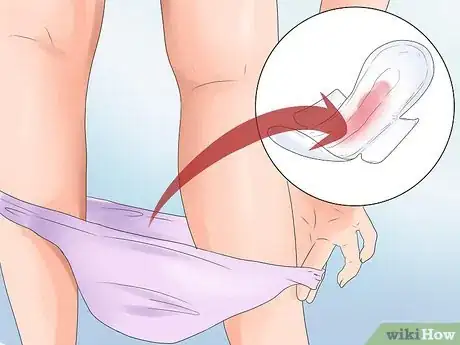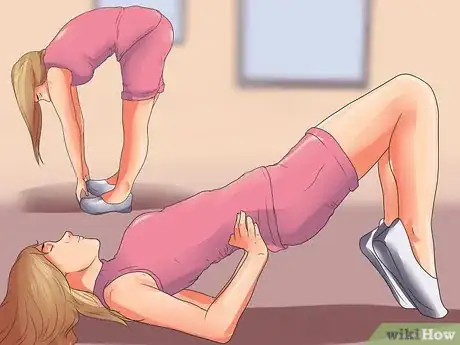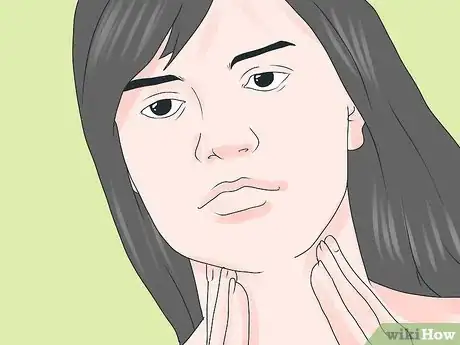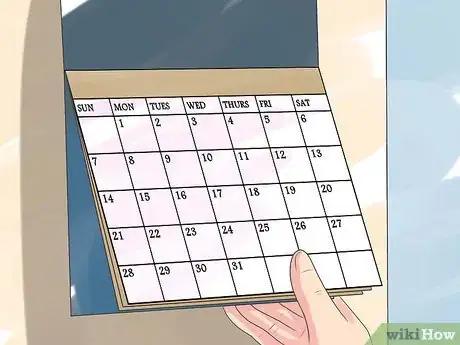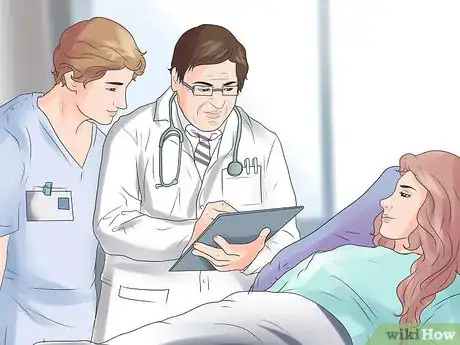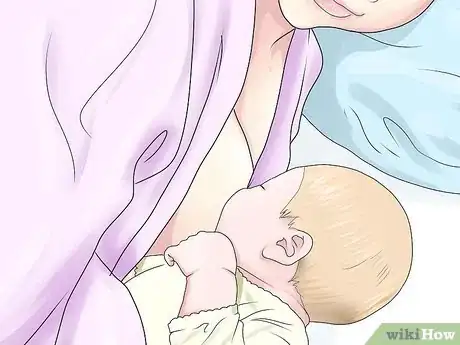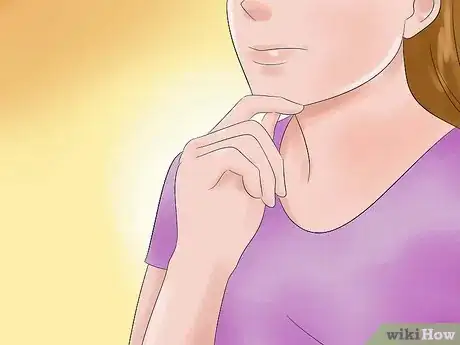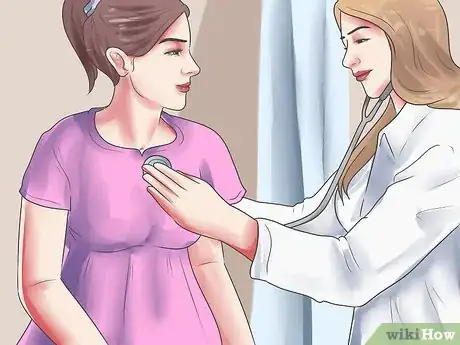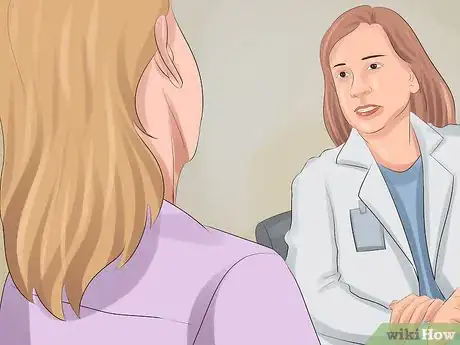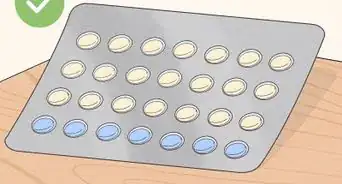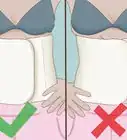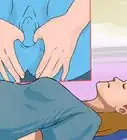This article was medically reviewed by Sarah Gehrke, RN, MS. Sarah Gehrke is a Registered Nurse and Licensed Massage Therapist in Texas. Sarah has over 10 years of experience teaching and practicing phlebotomy and intravenous (IV) therapy using physical, psychological, and emotional support. She received her Massage Therapist License from the Amarillo Massage Therapy Institute in 2008 and a M.S. in Nursing from the University of Phoenix in 2013.
There are 13 references cited in this article, which can be found at the bottom of the page.
This article has been viewed 216,556 times.
After giving birth, most of your focus will probably be on the baby. But don’t forget that you’ve been put through the wringer! Taking care of yourself isn’t selfish. In fact, it will make you a better parent. Your baby deserves a mother who is both physically and mentally healthy—a tall order, but one that you can achieve.
Steps
Managing Your Physical Recovery
-
1Rest. Giving birth is an incredibly intense experience, both mentally and physically, and you will need time to recover. Protect both the time you have with the baby and the time you have to yourself.[1]
- Try to sleep when the baby sleeps.
- If you have a partner, relative, or friend who is helping out, ask them to watch the baby occasionally so you can nap.
- Don’t worry if your house is a little messy. Your priority is taking care of yourself and your new baby.
-
2Ask others to help with cooking, house upkeep, and childcare. After you have a baby, it is important to rest and spend time bonding with your baby. Your family members should be willing to take over responsibilities like cooking meals, cleaning, and caring for any other children you have.[2]Advertisement
-
3Limit visitors. Your family and friends will all want to visit you and the baby, but don’t overwhelm yourself with company. Don’t be afraid to let them know if it’s not a good time for you. They will understand.[3]
-
4Deal with vaginal soreness. Whether you have a tear or not, you will be sore after delivering a baby. If your doctor had to perform an episiotomy (a small incision to make more room for the baby to come through) or you experienced a vaginal tear during delivery, you will likely experience soreness. As with the rest of your recovery, give it time to heal, but do takes steps to mitigate pain and avoid infection.[4]
- Sit on a pillow to ease discomfort.
- Use a squeeze bottle filled with warm water to cleanse after using the bathroom. Squirt a stream where you would normally use toilet paper, which can be irritating immediately after giving birth.
- Use an ice pack or chilled witch hazel pad to alleviate pain. Use these treatments externally only—never insert them into your vagina.[5]
- Try painkillers or stool softeners (after talking to your doctor).
- Talk to your doctor if you experience fever or intense pain, the wound becomes swollen or hot, or you notice discharge.
-
5Use pads to control bleeding. Even if you did not have an episiotomy or vaginal tear during delivery, you will likely experience bleeding and a discharge called lochia for about 2 weeks (and perhaps intermittently for the next 2 months). Wear pads, not tampons, to deal with this.[6]
- If your hospital offers disposable mesh underwear, take it. These undergarments won’t be enough to control the bleeding on their own, but they make a great foundation for pads. You can even wear them if you have had a C-section.[7]
-
6Try Kegel exercises for difficulty urinating. Giving birth puts a strain on your pelvic floor, bladder, and urethra, leading to a number of problems with urination. These problems will usually go away on their own, but wear sanitary pads and try Kegel exercises in the meantime.[8]
- Begin the exercise with an empty bladder.[9]
- Tighten your pelvic muscles (the same action you use to stop urinating).
- Hold for 5 seconds, then relax.
- Do this 5 times in a row.
- Work your way up to tightening for 10 seconds, then relaxing for 10 seconds.
- Do this 3 times a day in sets of 10 repetitions.
- If you’re having trouble figuring out which muscles to use, practice by stopping your urine midstream. Once you’ve gotten the hang of it, do not do Kegels during urination more than once or twice a month.
-
7Alleviate discomfort from swollen breasts. Whether or not you plan on breastfeeding, you may experience swelling, tenderness, and firmness in your breasts. Depending on your plans, there are a number of different ways to relieve this discomfort.[10]
- If you are planning to breastfeed, try nursing, pumping, placing warm washcloths over your breasts, or taking a warm shower. Try cold washcloths or ice packs after nursing.
- If you are not planning on breastfeeding, you don’t want to engage in any behaviors that will encourage milk production. Refrain from pumping your breasts and wear a structured bra. This will help stop milk production, causing your symptoms to go away.
- Regardless of your plans, pain relievers may help. Both acetaminophen and ibuprofen are fine to use while breastfeeding, as are most medications. Ask your doctor if you have any questions.[11]
-
8Treat hemorrhoids. If you feel pain or swelling when you use the bathroom, you might have hemorrhoids, a common and uncomfortable post-pregnancy symptom. Take steps to ease this discomfort.[12]
- Soak in the bathtub. Make sure the water is warm, not hot.
- Use chilled witch hazel pads where you are experiencing discomfort.
- Talk to your doctor about topical prescription medications.
- Eat foods high in fiber to regulate and soften bowel movements.
- Talk to your doctor about stool softeners or laxatives.
-
9Keep an eye on your thyroid. Some women experience thyroid problems after giving birth, called postpartum thyroiditis. This usually involves a period of hyperthyroidism followed by a period of hypothyroidism. Postpartum thyroiditis can be hard to diagnose because its symptoms—tiredness, trouble sleeping, lack of energy, and weight changes—overlap with symptoms many women experience after giving birth, anyway.
- In most women, thyroid problems go away on their own in about a year.
- Talk to your doctor if symptoms persist.
-
10Wait at least 6-8 weeks before resuming your normal routine. This includes exercise, sex, and other vigorous activity. Everyone’s recovery differs, however, so talk to your doctor before jumping back into anything.
Recovering from a C-Section
-
1Be prepared for a longer hospital stay. You are recovering from surgery, so you might find that the hospital wants to keep you for 2 or 3 days. This extended time is for a number of reasons:[13]
- Intravenous pain management. Most C-sections are performed under local anesthesia.[14] After the procedure is over, you may be given a pump that lets you manage the flow of IV pain medication.
- Monitored movement. Your doctor will want you to get up and moving as soon as possible. While this can be difficult, it can speed your recovery, regulate digestion, and ward off blood clots.
- Care for the surgery site. Your doctor will want to make sure that your incision does not become infected.
-
2Don’t be afraid to breastfeed. Neither the incision itself nor the medications you are taking for pain management should interfere with breastfeeding. If you want to pursue this method, feel free to do so as soon as you are able.[15]
- In fact, pain medication can actually make breastfeeding easier. Pain makes it more difficult to release oxytocin, which is necessary for milk production.
- Hospital staff can help you find a position in which you can breastfeed while still supporting yourself.
-
3Continue practicing proper self-care after returning home. Just as you spent a bit longer in the hospital than someone with a vaginal birth might, your at-home recovery will take a little longer, too—at least 12 weeks.[16] Observing these guidelines will make your recovery easier in the long run:[17]
- Don’t overdo it physically. At first, this means that you will want to get up as little as possible. Try to keep everything you need close enough that you can reach it. At the very least, restrict your movements to 1 floor--you should avoid stairs as much as possible in the first few weeks.
- Don’t do any heavy lifting. In the first few weeks, this means anything heavier than your baby. Try not to lift anything from a squatting position.
- Use extra pillows or a pregnancy belt to support the surgery site.
- Drink water. This will ease digestion and help replace lost fluids.
- Take pain medication if you need it.
- Wait until your doctor says it’s OK before having sex.
-
4Monitor your health. Your healthcare providers will help you with this while you are in the hospital, but once you are home, you will need to keep an eye out for potentially dangerous symptoms. Call your doctor if you notice any of the following:[18]
- A high fever and/or pain, redness, swelling, or discharge at the surgery site. These could be signs of infection.
- Breast pain that comes with redness and/or an elevated temperature.
- Vaginal discharge with an unpleasant smell.
- Pain while urinating.
- Heavy bleeding.
Taking Care of Your Mental Health
-
1Watch for the signs of postpartum depression. Between hormonal changes, worrying about the baby, and sleeplessness, it is easy to become overwhelmed after childbirth. For many people, these feelings go away quickly, but postpartum depression can strike at any point within a year of giving birth. Call your doctor if any of the following symptoms persist for more than 2 weeks:[19]
- Irritability
- Sadness, depression, or frequent crying
- Lack of energy
- Headaches, chest pains, heart palpitations, numbness, or hyperventilation
- Difficulty sleeping
- Inability to eat OR overeating
- Inability to focus or make decisions
- Memory problems
- Constant worrying about the baby
- Lack of interest in the baby
- Feelings of guilt and worthlessness
- Inability to enjoy activities you used to get pleasure from
-
2Call emergency services if you think about harming yourself or the baby. Seek help immediately if you experience these types of thoughts. Do not worry about feelings of shame or embarrassment. Healthcare professionals want to help you. Do what you need to do to protect yourself and your family.[20]
-
3Focus on the benefits of treatment. Many women are reluctant to talk to their doctors about postpartum depression because they think that it is their fault, that they are not good mothers, or that they are alone in these feelings. None of this is true. Postpartum depression reflects no weakness on your part, yet seeking treatment can have myriad benefits for you and your child.[21]
- You will feel much better, making it easier to take care of your baby.
- You will aid in your child’s cognitive development (children with mothers who experience postpartum depression show delayed language acquisition).
- You will facilitate your child’s ability to bond with others.
-
4Start an exercise program. Many women wish to return to a more active lifestyle after giving birth for physical reasons, but there is an even more important reason to lace up your sneakers: by increasing endorphins, exercise can ward off feelings of depression, including postpartum depression. Just make sure that your exercise program has been cleared by your doctor.[22]
- Walking is probably the safest option for you after you have your baby. Start with walking and only increase the intensity when your doctor says it is okay to do so.
Expert Q&A
-
QuestionWill I have loose skin after pregnancy?
 Wendy PowellWendy Powell is a Maternal Health and Exercise Specialist and the Founder and CEO of MUTU System, the world's best-selling, medically recommended online fitness education program for mothers. Wendy specializes in pregnancy, post-baby recovery, postpartum exercises, fitness education, and body confidence. Wendy works to shift the conversation on women's bodies towards equality and empowerment for health, confidence, and power. She is a published author, international speaker, and award-winning entrepreneur. Wendy is on the Women's Development Board of the MicroLoan Foundation and is a frequent contributor to the BBC. MUTU System has been featured in Vogue, the Huffington Post, Fox News Health, Daily Mail, and The Guardian, and is recommended by Hollywood Trainer, Jeanette Jenkins.
Wendy PowellWendy Powell is a Maternal Health and Exercise Specialist and the Founder and CEO of MUTU System, the world's best-selling, medically recommended online fitness education program for mothers. Wendy specializes in pregnancy, post-baby recovery, postpartum exercises, fitness education, and body confidence. Wendy works to shift the conversation on women's bodies towards equality and empowerment for health, confidence, and power. She is a published author, international speaker, and award-winning entrepreneur. Wendy is on the Women's Development Board of the MicroLoan Foundation and is a frequent contributor to the BBC. MUTU System has been featured in Vogue, the Huffington Post, Fox News Health, Daily Mail, and The Guardian, and is recommended by Hollywood Trainer, Jeanette Jenkins.
Maternal Health & Exercise Specialist The elasticity of your skin and its ability to spring back after pregnancy depends on your genetics, age, hydration, and nutrition. It may also be affected by how many children you've had and how close together you've had them.
The elasticity of your skin and its ability to spring back after pregnancy depends on your genetics, age, hydration, and nutrition. It may also be affected by how many children you've had and how close together you've had them.
References
- ↑ http://www.womenshealth.gov/pregnancy/childbirth-beyond/recovering-from-birth.html
- ↑ https://www.womenshealth.gov/pregnancy/childbirth-and-beyond/recovering-birth
- ↑ https://www.womenshealth.gov/pregnancy/childbirth-and-beyond/recovering-birth
- ↑ http://www.mayoclinic.org/healthy-lifestyle/labor-and-delivery/in-depth/postpartum-care/art-20047233?pg=1
- ↑ https://dailymed.nlm.nih.gov/dailymed/drugInfo.cfm?setid=1b50f4dc-c26a-431a-ae18-c43513871b39
- ↑ http://www.uofmhealth.org/health-library/abl1277
- ↑ http://www.parents.com/pregnancy/my-body/postpartum/healing-after-pregnancy/
- ↑ http://www.mayoclinic.org/healthy-lifestyle/labor-and-delivery/in-depth/postpartum-care/art-20047233?pg=1
- ↑ https://medlineplus.gov/ency/patientinstructions/000141.htm
- ↑ http://www.mayoclinic.org/healthy-lifestyle/labor-and-delivery/in-depth/postpartum-care/art-20047233?pg=2
- ↑ http://www.mayoclinic.org/healthy-lifestyle/infant-and-toddler-health/in-depth/breastfeeding-and-medications/art-20043975?pg=2
- ↑ http://www.mayoclinic.org/healthy-lifestyle/labor-and-delivery/in-depth/postpartum-care/art-20047233?pg=1
- ↑ http://www.mayoclinic.org/tests-procedures/c-section/basics/what-you-can-expect/prc-20014571
- ↑ https://www.mayoclinic.org/tests-procedures/c-section/about/pac-20393655
- ↑ http://www.mayoclinic.org/tests-procedures/c-section/basics/what-you-can-expect/prc-20014571
- ↑ http://www.parents.com/pregnancy/my-body/postpartum/healing-after-pregnancy/
- ↑ http://www.mayoclinic.org/tests-procedures/c-section/basics/what-you-can-expect/prc-20014571
- ↑ http://www.mayoclinic.org/tests-procedures/c-section/basics/what-you-can-expect/prc-20014571
- ↑ http://www.womenshealth.gov/pregnancy/childbirth-beyond/recovering-from-birth.html
- ↑ http://www.womenshealth.gov/pregnancy/childbirth-beyond/recovering-from-birth.html
- ↑ http://www.womenshealth.gov/pregnancy/childbirth-beyond/recovering-from-birth.html
- ↑ http://www.mayoclinic.org/diseases-conditions/depression/in-depth/depression-and-exercise/art-20046495


